Secrets of Ancient Egyptian Statues
The absence of necessary high-precision equipment, with the help of which numerous ancient Egyptian artifacts could have been created, as well as the absence of traces of industrial infrastructure for its production in Egypt itself and beyond its borders, testify that high technologies were brought from outside. And here it would be good to remember the mythological story of various peoples about the «sons of heaven,» who, upon completing a humanitarian mission on Earth, return to «their star.
At the turn of the III millennium BC in Egypt, practically from nothing there was an inexplicable technological breakthrough. As if by magic in a very short time Egyptians build the pyramids and show unprecedented skill in the processing of solid materials — granite, diorite, obsidian, quartz… All these wonders occurred before the advent of iron, machine tools and other technical tools. Subsequently, the unique skills of the ancient Egyptians disappeared just as rapidly and inexplicably…
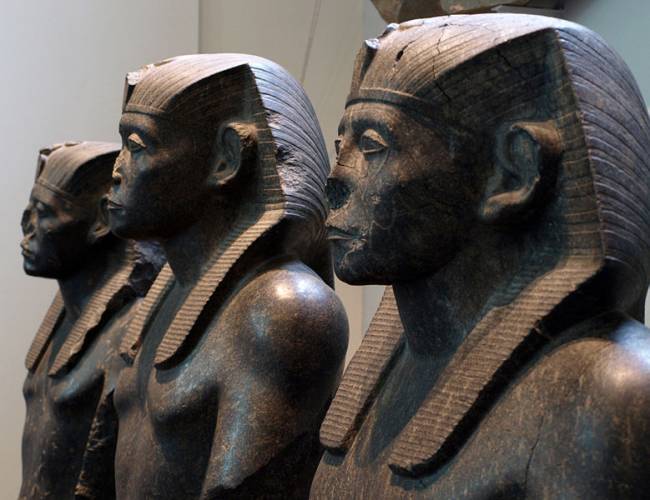
Strange Neighborhood
Take, for example, the story of the Egyptian sarcophagi. They are divided into two groups, which differ strikingly in the quality of execution. On the one hand there are the sloppily made boxes, dominated by uneven surfaces. On the other hand — polished with incredible skill multi-ton granite and quartzite containers of unknown purpose. Often the quality of processing of these sarcophagi is at the limit of modern machine technology.
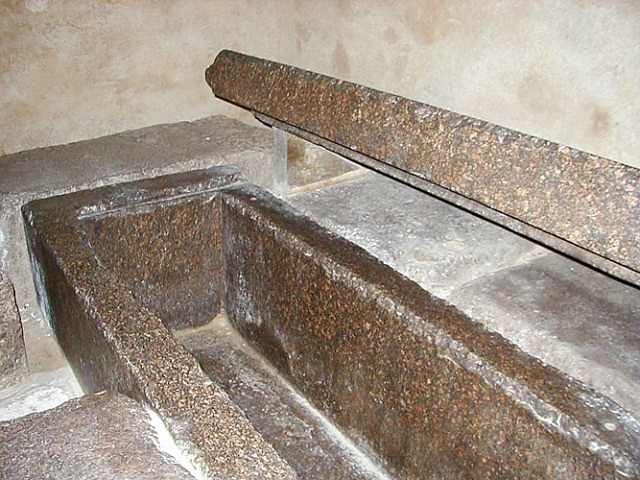

No less of a mystery are the ancient Egyptian statues created from ultra-durable materials. In the Egyptian Museum everyone can see the statue carved from a single piece of black diorite. The surface of the statue is polished to a mirror shine. Scientists suggest that it dates from the Fourth Dynasty (2639-2506 BC) and depicts the Pharaoh Khafra, who is credited with building one of the three largest pyramids of Giza.
But here’s the trouble — in those days Egyptian craftsmen used only stone and copper tools. Soft limestone could still be worked with such tools, but diorite, which is one of the hardest rocks, well, not at all.
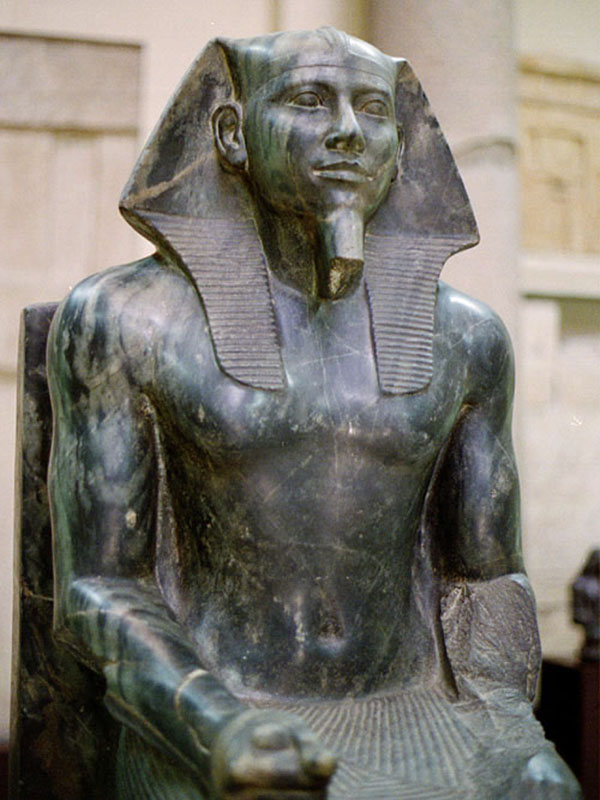
And these are the flowers. But the colossi of Memnon, located on the west bank of the Nile, opposite Luxor, are the berries. Not only are they made of heavy-duty quartzite, but they are 18 meters high, and each statue weighs 750 tons. In addition, they rest on a quartzite pedestal weighing 500 tons! Clearly, no transportation device could support such a load. Although the statues are badly damaged, the excellent workmanship of the surviving flat surfaces suggests the use of advanced machine technology.
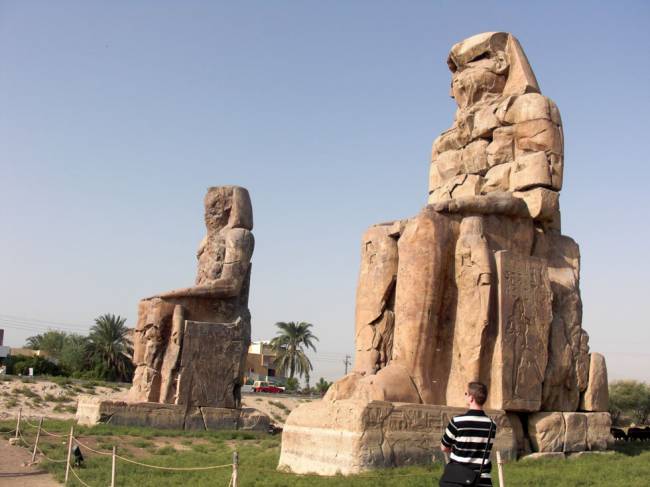
But even the grandeur of the colossi pales in comparison with the wreckage of the giant statue resting in the courtyard of the Ramesseum, the memorial temple of Ramses II. Made from a single piece of pink granite, the sculpture reached a height of 19 meters and weighed about 1000 tons! The weight of the pedestal on which the statue once stood was about 750 tons. The monstrous size of the statue and the highest quality of execution absolutely do not fit into the technological capabilities of Egypt of the New Kingdom period (1550-1070 B.C.), which modern science dates the sculpture to.
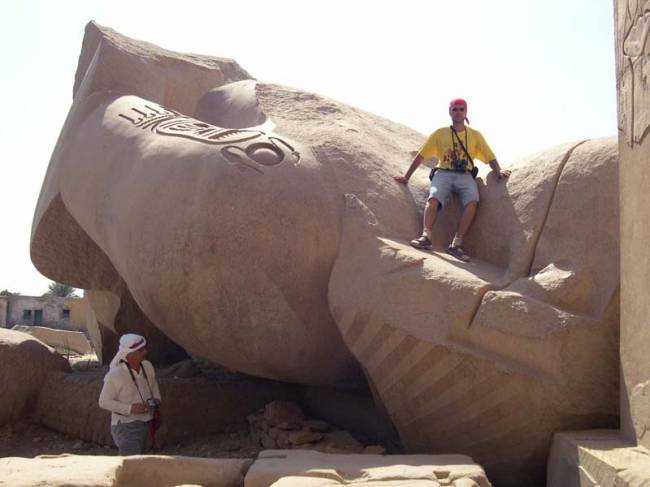
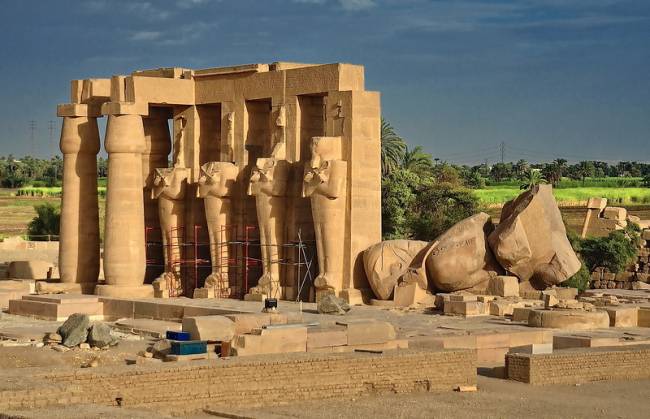
But the Ramesseum itself corresponds to the technical level of that time: the statues and temple buildings are mostly made of soft limestone and do not shine with structural sophistication.
The same is true of the Memnon colossi, the age of which is determined by the remains of the memorial temple behind them. As in the case of Ramesseum, the quality of this structure, to put it mildly, does not shine with high technology — adobe and roughly fitted limestone, that is all masonry.
Such incongruous proximity can only be explained by the fact that the pharaohs simply attached their temple complexes to the monuments left by another, much older and more highly developed civilization.
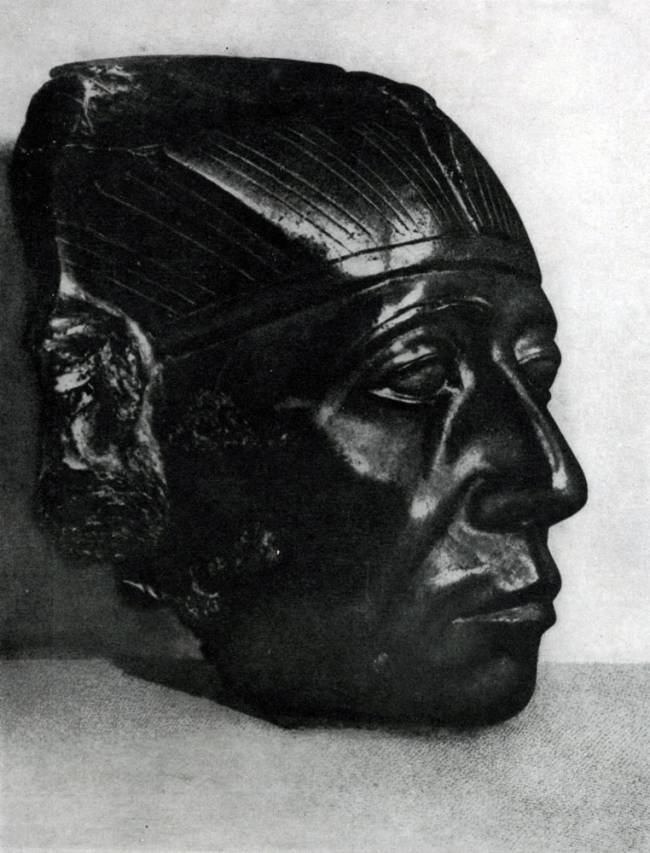
The eyes of the statue
There is another mystery associated with ancient Egyptian statues. We are talking about eyes made of pieces of rock crystal, which were inserted, as a rule, into limestone or wooden statues. The quality of the lenses is so high that thoughts of lathes and grinding machines come to mind.
The eyes of the wooden statue of Pharaoh Horus look blue and gray depending on the angle of light and even imitate the capillary structure of the retina! A study by Professor Jay Enoch of UC Berkeley showed the amazing closeness of these glass moulages to the shape and optical properties of a real eye.
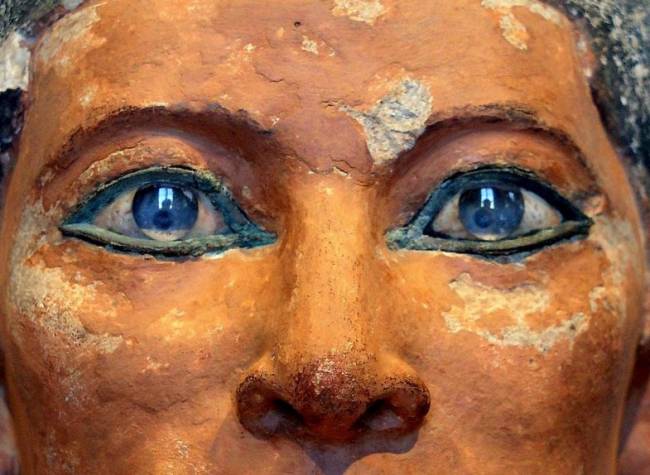

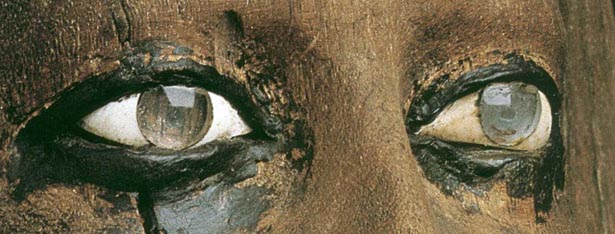
An American researcher believes that Egypt achieved the greatest mastery in lens processing by about 2500 B.C. After that time, such a remarkable technology for some reason ceased to be exploited and was subsequently forgotten altogether. The only reasonable explanation is that the Egyptians borrowed quartz blanks for eye models from somewhere and when supplies dried up, the «technology» was also interrupted.
What did the gods look like?
The ancient Greek historian Diodorus of Sicily wrote’ from the words of Egyptian priests that mortals ruled Egypt for less than 5 millennia. The kingdom of men was preceded by the power of gods and heroes, who ruled for an incredible 18,000 years. The ancient Egyptian priest and historian Manephon also begins his list of rulers of Egypt with a dynasty of gods and demigods.
If we compare the statements of ancient authors and the facts that we have at the moment, it turns out that there was no technological breakthrough. Simply since the III millennium B.C. the artifacts left from the first divine dynasties began to surface in Egypt. It is possible that the pharaohs purposely sought, tried to master and in passing appropriated the surviving fragments of this heritage.
Sculptural images of the daughters of the pharaoh-reformer Ehnaton can tell about the appearance of the true creators of the ancient masterpieces. The first thing that catches the eye is an unnaturally elongated shape of the skull, characteristic, by the way, and for other works of Amarna period. This phenomenon gave rise to the hypothesis of a congenital disease of the Pharaoh’s family. However, there is no mention of any mental abnormalities in the ruler’s family, which should inevitably cause such a disease.
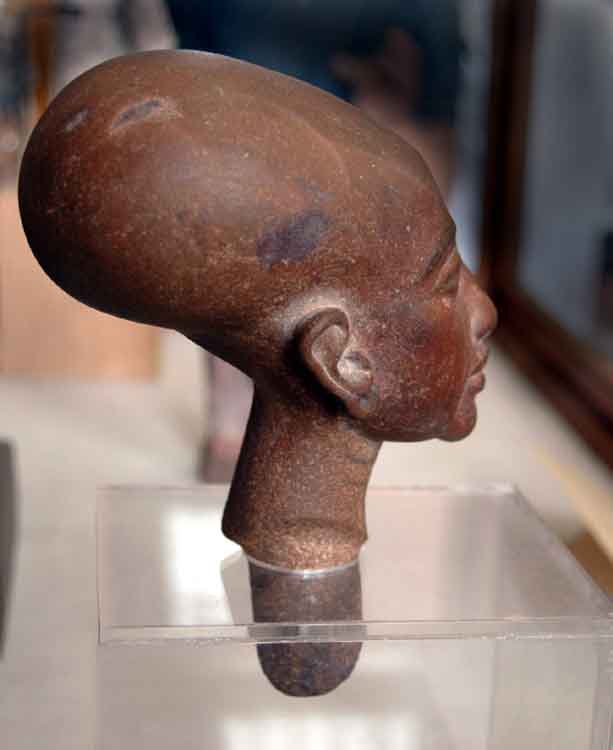
If the pharaohs really were distant descendants of the gods, it is possible that from time to time they could show «divine» genes. Isn’t this anatomical peculiarity of the gods connected with the custom of head deformities widespread among various peoples?
Another important and mysterious detail of the ancient Egyptian sculptural canon is absolute symmetry of facial proportions. As is known, there are no symmetrical objects in nature. This rule also applies to the human body. Moreover, experiments have shown that photos composed of strictly symmetrical halves of the same face cause instinctive rejection in humans.
There is something unnatural and alien to human nature in them. But, perhaps, in the world where the gods came from, there were other natural conditions, thanks to which «anomaly» became the norm? In any case, we should listen carefully to the words of Plutarch: «It is not he who denies the existence of the gods who falls into greater blasphemy, but he who acknowledges them to be what the superstitious consider them to be.
